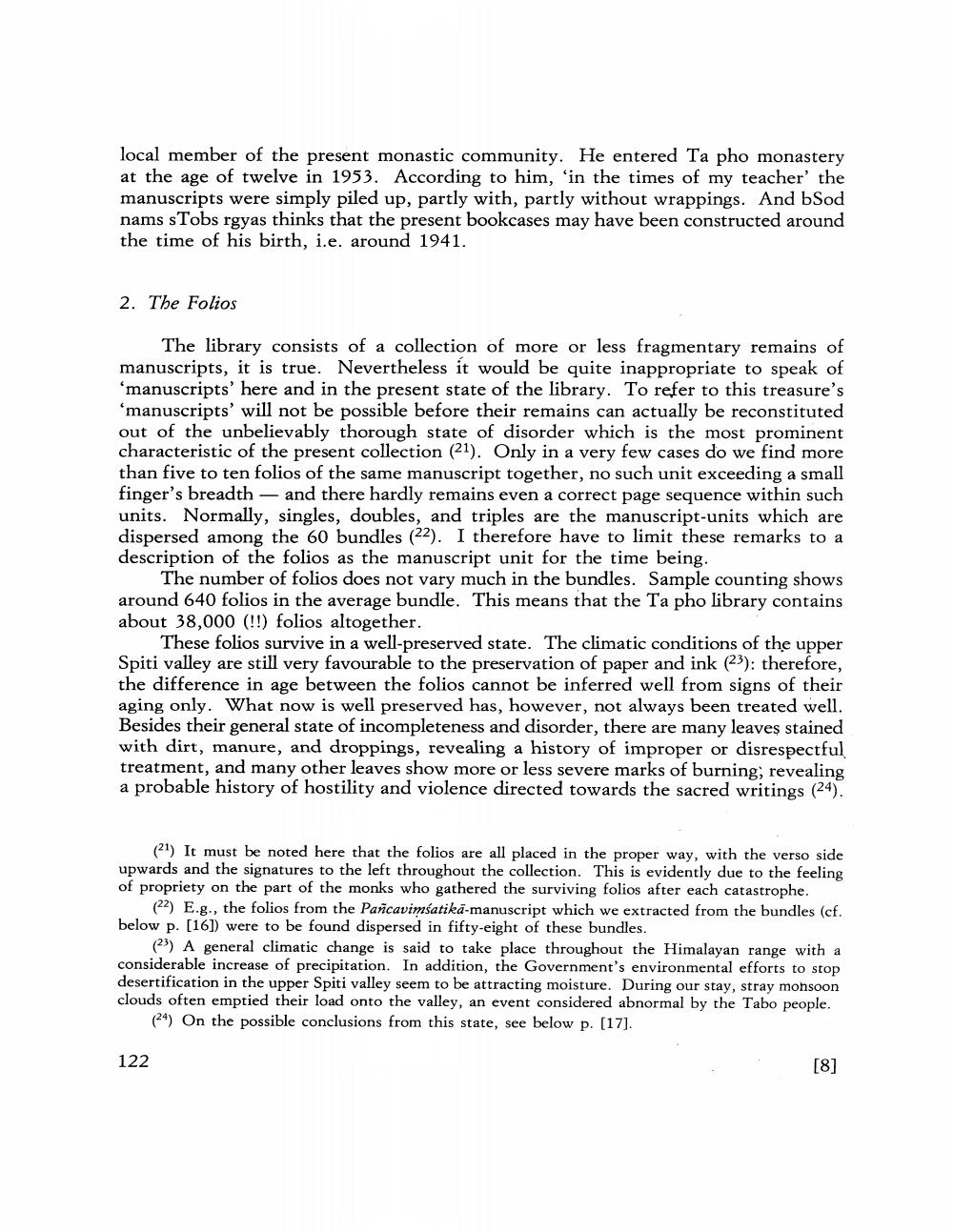Book Title: Report On Kanjur Of Ta Pho Author(s): Ernst Steinkellner Publisher: Ernst Steinkellner View full book textPage 8
________________ local member of the present monastic community. He entered Ta pho monastery at the age of twelve in 1953. According to him, 'in the times of my teacher' the manuscripts were simply piled up, partly with, partly without wrappings. And bSod nams sTobs rgyas thinks that the present bookcases may have been constructed around the time of his birth, i.e. around 1941. 2. The Folios The library consists of a collection of more or less fragmentary remains of manuscripts, it is true. Nevertheless it would be quite inappropriate to speak of ‘manuscripts' here and in the present state of the library. To refer to this treasure's ‘manuscripts' will not be possible before their remains can actually be reconstituted out of the unbelievably thorough state of disorder which is the most prominent characteristic of the present collection (21). Only in a very few cases do we find more than five to ten folios of the same manuscript together, no such unit exceeding a small finger's breadth — and there hardly remains even a correct page sequence within such units. Normally, singles, doubles, and triples are the manuscript-units which are dispersed among the 60 bundles (22). I therefore have to limit these remarks to a description of the folios as the manuscript unit for the time being. The number of folios does not vary much in the bundles. Sample counting shows around 640 folios in the average bundle. This means that the Ta pho library contains about 38,000 (!!) folios altogether. These folios survive in a well-preserved state. The climatic conditions of the upper Spiti valley are still very favourable to the preservation of paper and ink (23): therefore, the difference in age between the folios cannot be inferred well from signs of their aging only. What now is well preserved has, however, not always been treated well. Besides their general state of incompleteness and disorder, there are many leaves stained with dirt, manure, and droppings, revealing a history of improper or disrespectful treatment, and many other leaves show more or less severe marks of burning, revealing a probable history of hostility and violence directed towards the sacred writings (24). (21) It must be noted here that the folios are all placed in the proper way, with the verso side upwards and the signatures to the left throughout the collection. This is evidently due to the feeling of propriety on the part of the monks who gathered the surviving folios after each catastrophe. (22) E.g., the folios from the Pancavimśatikā-manuscript which we extracted from the bundles (cf. below p. [16]) were to be found dispersed in fifty-eight of these bundles. (2) A general climatic change is said to take place throughout the Himalayan range with a considerable increase of precipitation. In addition, the Government's environmental efforts to stop desertification in the upper Spiti valley seem to be attracting moisture. During our stay, stray monsoon clouds often emptied their load onto the valley, an event considered abnormal by the Tabo people. (24) On the possible conclusions from this state, see below p. [17]. 122 [8]Page Navigation
1 ... 6 7 8 9 10 11 12 13 14 15 16 17 18 19 20 21 22
